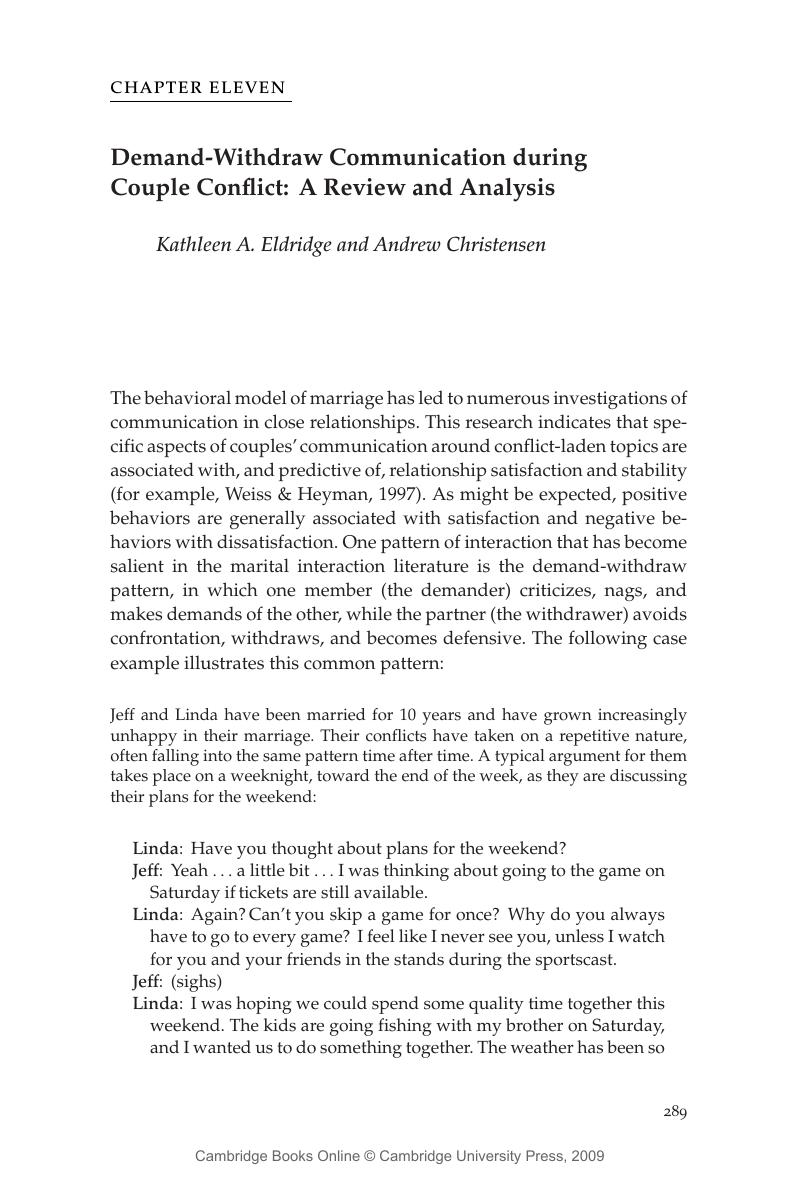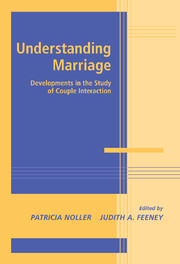Book contents
- Frontmatter
- Contents
- Contribitors
- Introduction
- SECTION ONE THE EFFECT OF COGNITION ON INTERACTION PATTERNS
- SECTION TWO UNDERSTANDING THE IMPORTANCE OF POSITIVE INTERACTION
- SECTION THREE COPING WITH DISAPPOINTMENT, CRITICISM, AND BETRAYAL
- SECTION FOUR POWER, CONFLICT, AND VIOLENCE IN MARITAL INTERACTION
- Introduction to Section Four
- 11 Demand-Withdraw Communication during Couple Conflict: A Review and Analysis
- 12 Approaches to the Study of Power in Violent and Nonviolent Marriages, and in Gay Male and Lesbian Cohabiting Relationships
- 13 The Communication of Couples in Violent and Nonviolent Relationships: Temporal Associations with Own and Partners' Anxiety Arousal and Behavior
- Marital interaction at important transition periods
- SECTION SIX Interventions for strengthening relationships
- Conclusions
- Index
- References
11 - Demand-Withdraw Communication during Couple Conflict: A Review and Analysis
Published online by Cambridge University Press: 25 July 2009
- Frontmatter
- Contents
- Contribitors
- Introduction
- SECTION ONE THE EFFECT OF COGNITION ON INTERACTION PATTERNS
- SECTION TWO UNDERSTANDING THE IMPORTANCE OF POSITIVE INTERACTION
- SECTION THREE COPING WITH DISAPPOINTMENT, CRITICISM, AND BETRAYAL
- SECTION FOUR POWER, CONFLICT, AND VIOLENCE IN MARITAL INTERACTION
- Introduction to Section Four
- 11 Demand-Withdraw Communication during Couple Conflict: A Review and Analysis
- 12 Approaches to the Study of Power in Violent and Nonviolent Marriages, and in Gay Male and Lesbian Cohabiting Relationships
- 13 The Communication of Couples in Violent and Nonviolent Relationships: Temporal Associations with Own and Partners' Anxiety Arousal and Behavior
- Marital interaction at important transition periods
- SECTION SIX Interventions for strengthening relationships
- Conclusions
- Index
- References
Summary

- Type
- Chapter
- Information
- Understanding MarriageDevelopments in the Study of Couple Interaction, pp. 289 - 322Publisher: Cambridge University PressPrint publication year: 2002
References
- 94
- Cited by



